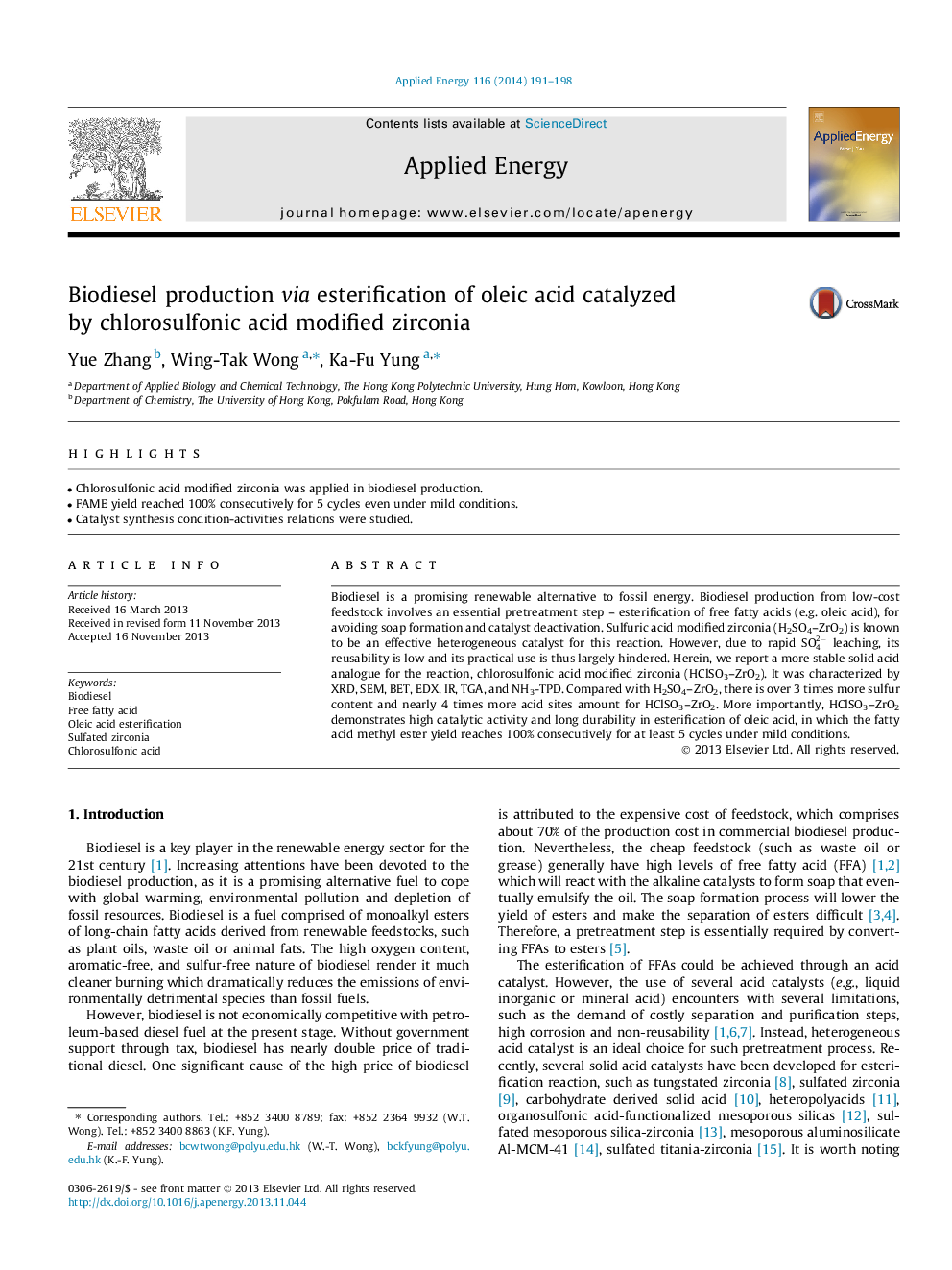| Article ID | Journal | Published Year | Pages | File Type |
|---|---|---|---|---|
| 6691212 | Applied Energy | 2014 | 8 Pages |
Abstract
Biodiesel is a promising renewable alternative to fossil energy. Biodiesel production from low-cost feedstock involves an essential pretreatment step - esterification of free fatty acids (e.g. oleic acid), for avoiding soap formation and catalyst deactivation. Sulfuric acid modified zirconia (H2SO4-ZrO2) is known to be an effective heterogeneous catalyst for this reaction. However, due to rapid SO42- leaching, its reusability is low and its practical use is thus largely hindered. Herein, we report a more stable solid acid analogue for the reaction, chlorosulfonic acid modified zirconia (HClSO3-ZrO2). It was characterized by XRD, SEM, BET, EDX, IR, TGA, and NH3-TPD. Compared with H2SO4-ZrO2, there is over 3 times more sulfur content and nearly 4 times more acid sites amount for HClSO3-ZrO2. More importantly, HClSO3-ZrO2 demonstrates high catalytic activity and long durability in esterification of oleic acid, in which the fatty acid methyl ester yield reaches 100% consecutively for at least 5 cycles under mild conditions.
Related Topics
Physical Sciences and Engineering
Energy
Energy Engineering and Power Technology
Authors
Yue Zhang, Wing-Tak Wong, Ka-Fu Yung,
